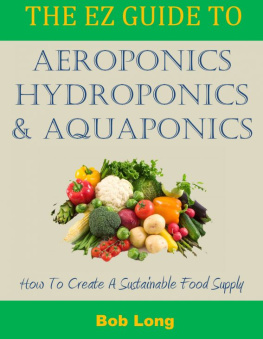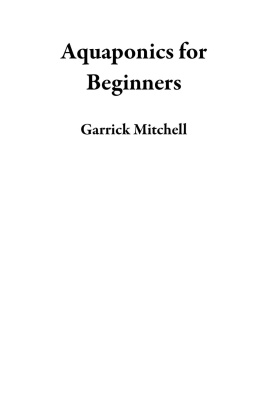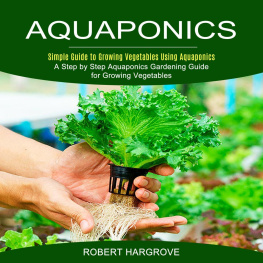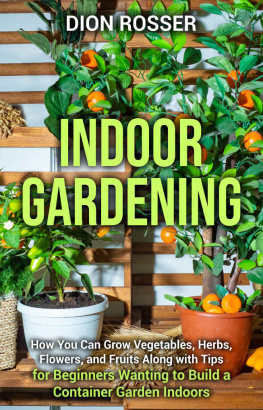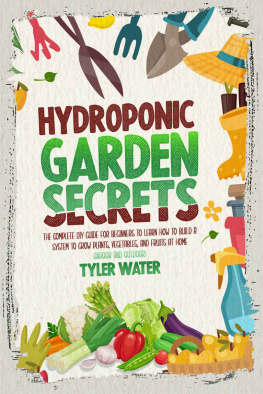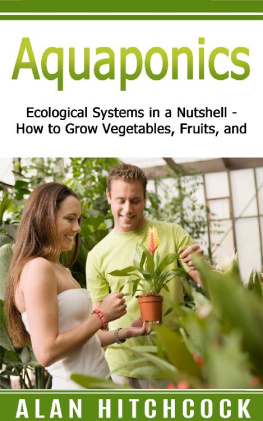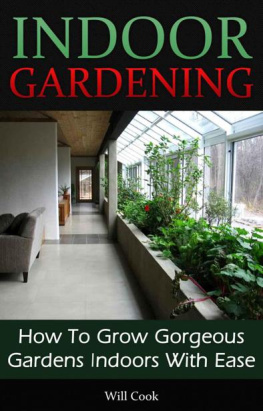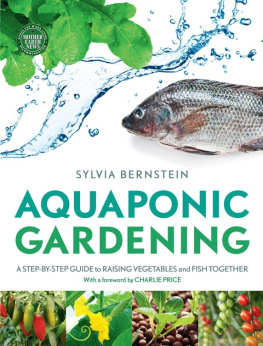The EZ Guide to GardeningWithout Soil
By Bob Long
Smashwords Edition
Copyright 2012 Bonjour Limited HoldingsLLC
All rights reserved
Texas, USA
ISBN: 9781476147
Table of Contents
- -
Introduction

Ponos is the god of labor in Greek mythologyand the basis for the Greek word ponics which means hard work. Inmodern English, ponics is combined with the Greek and Latin wordsfor air and water in describing 3 different methods of soil lessgardening; hydroponics, aeroponics and aquaponics.
Photosynthesis in plants requires access tominerals, especially nitrogen, phosphorus and potassium. Thesenutrients are found naturally in the soil but the soil itself isnot required for plant growth. So the common thread in all soilless gardening techniques is the existence of an alternative meansof delivering the necessary minerals directly to the roots of theplants.
In this book we will cover 3 of the mostpopular methods of soil less gardening.
1) Hydroponics
Hydro is the Greek word for water andHydroponics literally means working water. It is the name for theprocess of growing plants in beds of sand, gravel, or similarsupporting material that is flooded with nutrient rich water basedsolutions. Hydroponics goes back 1000s of years to the earlyEgyptians, Aztecs and Chinese and one of the 7 wonders of theancient world, the Hanging Gardens of Babylon, is thought to be anearly application of hydroponic cultivation. Hydroponics is thesimplest and most fool proof of the three systems to implement butalso the least efficient. Regardless it enables easy indoorgardening and will typically produce crops on less land while usingonly 10% of the water that is required for traditionalagriculture.
2) Aeroponics
Aero is the Greek word for air and aeroponicsis a gardening technique that grows plants without anchoring themin soil or the aggregate media that is used in hydroponics. Inaeroponics, the plants roots are suspended in air in a chamber andintermittently spayed or misted with nutrient-laden water. The goalis to hold the humidity of the chamber at or close to 100% whichexposes the roots to abundant oxygen and CO2 as well as preciselymeasured levels of the required nutrients. Aeroponics is arelatively new high tech method of gardening dating back to the endof the 20th century. It is well suited to indoorgardening and can produce crop yields that exceed hydroponics by asmuch as 40%. It is also more complicated and less forgiving thenhydroponics. The wet/dry spray cycles must be consistently timedand crops can be severely damaged or completely lost due to evenshort electrical power outages or equipment failures.
3) Aquaponics
Aqua is the Latin word for water andaquaponics is the modern practice of growing fish and plants in aclosed water system utilizing the natural synergistic relationshipbetween these two species. Aquaponics combines hydroponics withaquaculture to create a sustainable food producing process thatregularly yields organic fruits or vegetables and healthy fishpopulations for either consumption or as ornamental pets.Aquaculture or fish farming is the growing of aquatic species, suchas fish, crayfish and prawns in a controlled environment. Asstated, hydroponics is growing plants in a solution of water andnutrients.
As they eat and grow fish produce waste thatintroduce ammonia into the water which is toxic to most aquaticanimals. Through a natural multi-step process known as the NitrogenCycle, ammonia from fish waste products are transformed by bacteriainto nitrates that are a source of the nutrients that are needed byplants. The plants feed on these nutrients and filter andclean the water for the fish. By combining these two systems,aquaponics is the ideal answer to a fish framers problem ofmaintaining water quality and a hydroponic growers need fornutrient rich water.
All three of these growing methods can beused for indoor, soil less food production year around. Theyprovide an alternative for would be urban gardeners who lackoutdoor space and a potential means for full scale food productionin areas of the world with limited access to arable land.
-
What is Hydroponics?
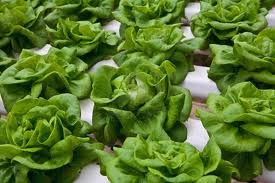
Hydroponics is derived from the Greek wordsHydro meaning water and Ponics meaning work. It literally meansworking water and is a method of growing plants without soil bysubmersing their roots in water based nutrient solutions.Hydroponics goes back 1000s of years to the early civilizations ofthe Egyptians, Aztecs and Babylonians. The Hanging Gardens ofBabylon, which is one of the seven wonders of the ancient world, isthought to be an early example of hydroponics.
Today hydroponics is increasingly used toaddress hunger by providing a stable food supply for locations withlimited or no access to arable land. It is also used by urbangardeners who want to grow fresh fruit and vegetable indoors or ontheir roof tops. It is even being experimented with by NASA toprovide a sustainable food supply for deep space travel or futurecolonies on the Moon or Mars.
Photosynthesis in plants requires access tominerals, especially nitrogen, phosphorus and potassium. Thesenutrients are found naturally in the soil but the soil itself isnot required for plant growth. So in the simplest sense hydroponicsis about alternative methods of delivering those minerals to theroots of plants directly without soil.
There are several different approaches todelivery but the common element is a water based solution with aproper mixture of the necessary nutrients. By directly applyingthis solution to the roots, hydroponics is an efficient growingprocess that can produce crops on about 20% of the land while usingonly 10% of the water as traditional soil based agriculture. Cropsare able to be planted in close proximity to each other and alsovertically on elevated trays saving space while the water isconserved since it is recycled. By eliminating soil you alsoeliminate all soil born diseases and significantly reduce the needfor pesticides
In all the various forms of hydroponics, theplants roots are immersed in carefully measured water basednutrient solution. The dissolved minerals are delivered to theroots through several techniques which include continuous waterflow, various floods and drain concepts, and the use of misters andsprayers in a hydroponics derivative method called Aeroponics.
Virtually any plant can be grown utilizinghydroponics, but some plants are more suitable than others.Lettuce, tomatoes, cucumbers, peppers and most herbs are some ofthe best choices for hydroponic gardeners. With hydroponics theseplants can be grown indoors and harvests can take place year round.For anybody living in a location with limited or no access toarable land, hydroponics is an effective alternative for producinga stable supply of fresh fruit and vegetables.
Types of Hydroponic Systems
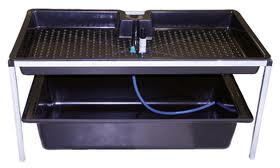
There are 4 basic types of hydroponic systems, DeepWater Culture (DWC), Ebb and Flow (Flood & Drain), Drip Systemsand N.F.T. (Nutrient Film Technique) that will be covered in thischapter. There are also different variations of these basicsystems, but all hydroponic methods are derived from these four.Aeroponics will be addressed separately in its own section of thisbook.
Next page
